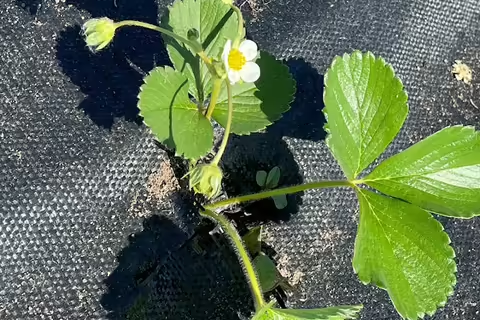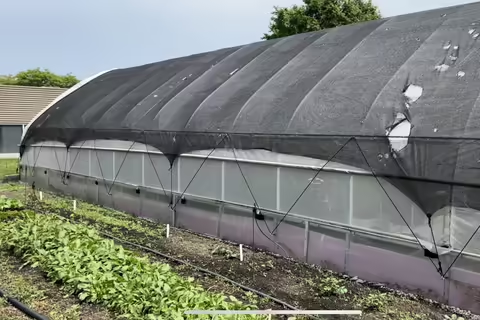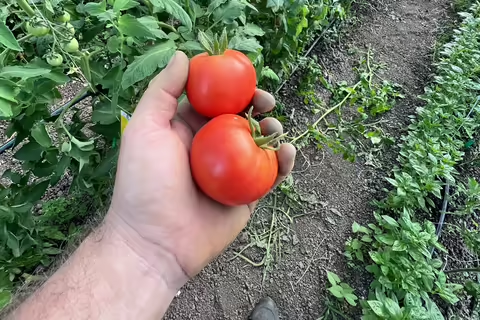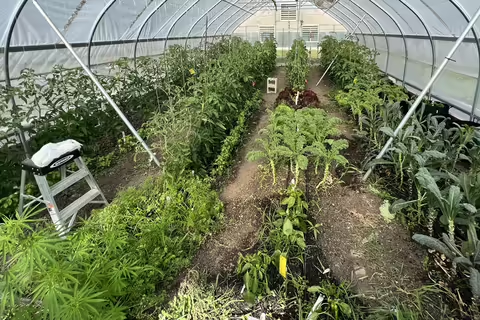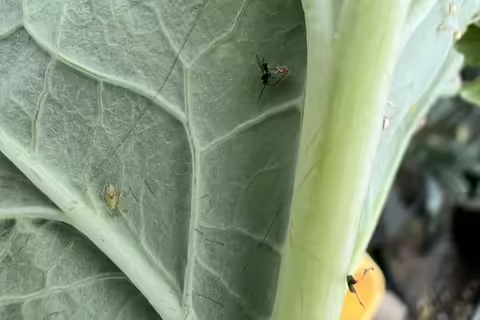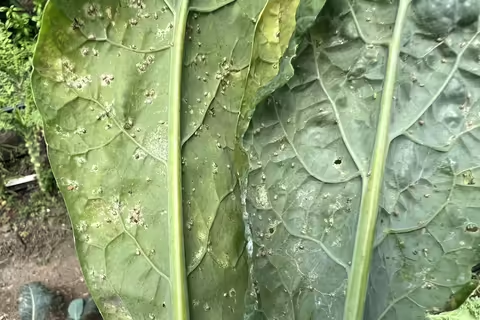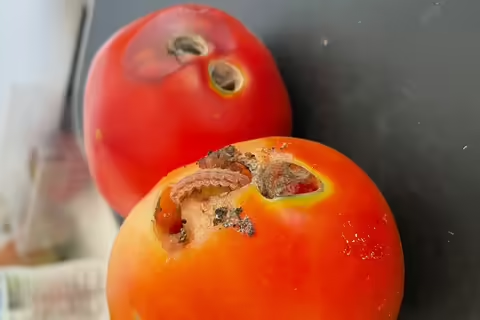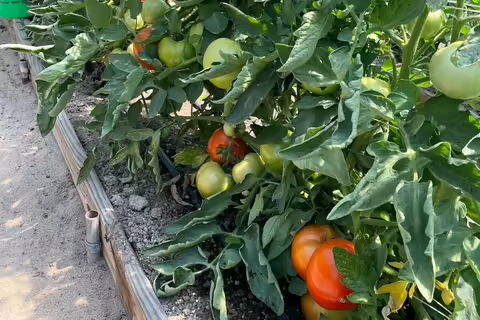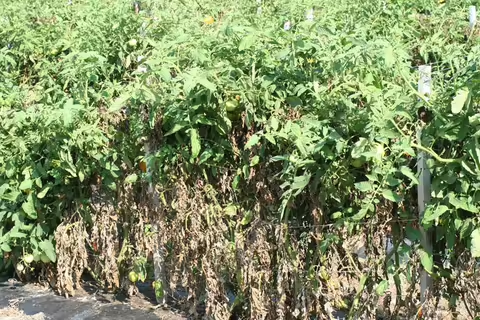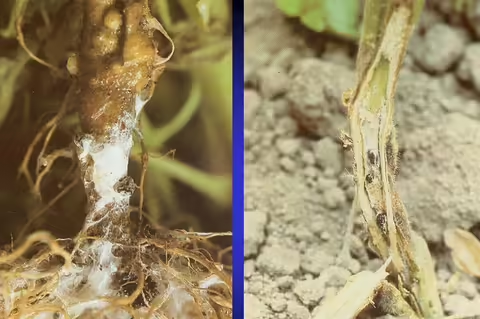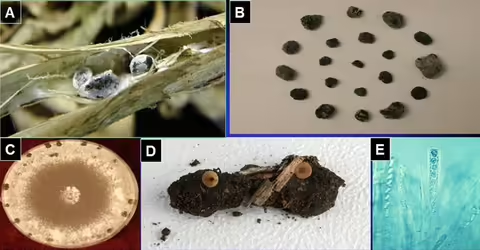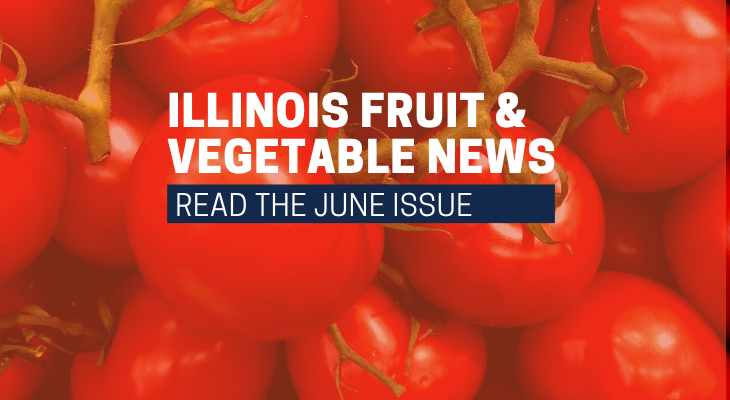
Sign Up by June 30 To Receive Your U.S. Census of Agriculture
Ag census data informs policy, research, assistance programs, ag education, community development, and more. From ranchers to greenhouse and backyard growers and urban farmers to producers working thousands of acres, every ag producer needs to be represented. The ag census is farmers' voice, future, and opportunity. Remember, even small plots of land - whether rural or urban - growing fruit, vegetables, or some food animals count if $1,000 or more of such products were raised and sold, or normally would have been sold, during the Census year. Products that have been donated also qualify towards that $1,000 total. You’re likely qualified to be counted, so sign up to receive your ag census today. Learn more at USDA’s National Agricultural Statistics Service. Surveys will be sent beginning November 2022.
Kathryn Pereira. 773-233-2900. kpereira@illinois.edu
NASDA Foundation Education and Outreach Pilot: Removing Barriers to USDA Good Agricultural Practices (GAP) Audit Programs
A pilot educational workshop introducing USDA’s Good Agricultural Programs is available to socially disadvantaged and underserved growers. This workshop is organized by the National Association of State Departments of Agriculture, Illinois Department of Agriculture, and Illinois Extension.
- Date: Tuesday, June 28, 2022, approximately three hours with Q&A.
- Location: Eden Place Farms, 4911 S Shields Ave, Chicago
- Agenda: The Illinois Pilot Team will deliver training covering the Grower Toolkit and GAP funding opportunities in Illinois. USDA personnel will be in attendance to answer questions.
USDA Offers Programs For Organic, Transitioning Costs
The Organic Certification Cost Share Program provides cost share assistance to producers and handlers of agricultural products who are obtaining or renewing their certification under the National Organic Program. The Organic and Transitional Education and Certification Program builds upon OCCSP, and producers can receive cost share through both programs. To apply, producers and handlers should contact the Farm Service Agency at their local USDA Service Center. As part of completing the applications, producers and handlers must provide documentation of their organic certification and eligible expenses. Producers have until October 31, 2022 to file applications, and FSA will make payments as applications are received.
Elizabeth Wahle. 618-344-4230. wahle@illinois.edu
USDA Will Offer Assistance For On-Farm Food Safety Related Expenses
A new USDA program will assist specialty crop operations with eligible expenses related to on-farm food safety certification requirements. Visit the website for details and information on the Food Safety Certification for Specialty Crops. Applications begin June 27. Eligible expenses include developing a food safety plan, maintaining or updating a food safety plan, food safety certification, certification upload fees, microbiological testing, and training expenses. Local Farm Service Agency offices have information on this program.
Bronwyn Aly. 618-695-2441. baly@illinois.edu)
Northern Illinois Regional Report
June-bearing strawberry season began the week of June 6. Commonly, the season runs until the end of June. Many growers I have spoken to have been pleased with yields. We just need good weather to encourage folks to come out for u-pick.
We had a period of air temperatures in the 60-70s F which has then been followed by heat the week of June 13. Some parts of the north are receiving the rain while others are not getting the rain they need. The tart cherry season may be low compared to other years. Due in some part to that very warm week the first week of May, yields have been extremely low. Anecdotally, the tart cherry tree at our Winnebago County office barely has fruit on it compared to many years where it is covered.
The Day-Neutral Strawberry research continues this month. One of the main tasks the first four to six weeks has been the hand removal of flowers in order to focus on root development. With one site being under drip irrigation, I do notice more flower development compared to bare-ground, non-irrigated. Runner removal is an additional action that has to occur when growing day-neutral strawberries. I have seen some runners during this establishment period but that will become the next weekly management task throughout the growth of these annual plants. We are still expecting the harvest period to begin the first week of August.
About the photo: Strawberry flowers develop often during the establishment period of Day-Neutrals. In order to focus on root development, it is a recommended best practice to remove these flowers. After six weeks, we’ll allow any flowers to remain and shift to removing runners. Photo by G. McCarty.
Grant McCarty. 815-235-4125. gmccarty@illinois.edu
South Suburban Cook Urban Agriculture Demonstration and Research Site
The summer solstice has arrived. The northern hemisphere is experiencing its maximum tilt toward the sun, and these past two weeks have reflected that. While we usually do not experience our high summer temperatures at this point in June, we have had more 90-degree days than I can remember to this point in any farming season. Adapting to these changing climatic conditions will be increasingly important for all farmers, especially for farmers in urban areas who can experience even warmer temperatures from the urban heat island effect.
A strategy we employ at SoSuCo is the judicious use of shade cloth when the temperatures are consistently in the 90-degree plus range for multiple days. We employ the shade cloth over the high tunnel and low tunnel hoops in the field to allow newly established heat-sensitive crops to establish with less plant stress. With the shade cloth on, the temperatures in the high tunnel can match the outdoor temperature or be cooled by 6-9°F. This temperature control is an ideal result without active cooling systems. Without the shade cloth, temperatures in a high tunnel can reach levels that could cause flower abortion, pollination sterility, and ripening disorders. More in-depth discussion about using shade cloth is covered in the most recent Urban Ag Connect vlog.
Warm-season fruiting crops in the high tunnel are just beginning to yield vine ripe fruit. It starts as a trickle and then will ramp up over the next couple of weeks into a furious flurry of fruiting vines. I have harvested a few red Sakura cherry tomatoes and Sun Golds since the first week of June; however, the first Early Girl (60-day) tomatoes were harvested on June 20. These were planted into the tunnel on April 29. These Early Girl and New Girl tomato varieties are part of an irrigation trial in the high tunnels exploring whether outdoor dry farming techniques adapted to the high tunnel can enhance the sweetness of small slicer tomatoes.
One irrigation treatment will strictly control water levels when tomatoes begin fruiting to see if Brix levels increase. This dry farming method is common in outdoor California tomatoes, where they receive virtually all of their rainfall in the winter and not during the growing season. Rainfall or excessive irrigation pre-harvest for summer fruiting vegetables like tomatoes can exhibit a negative correlation with the Brix/sugar content of the fruit. Precise irrigation control in a controlled environment (such as a high tunnel) and inducing low levels of water stress under control can drive more sugars to the fruit. We hope to control the sweetness without significantly affecting the overall yield.
Aphid pressure in the high tunnel seems to be tailing off and decreasing. Early aphid pressure has been noted in a few hot spot areas in the tunnel. My early pepper plantings had noticeable growth setbacks because of this pressure, but this growth setback has not carried over to the nearby tomato plantings. A sign of this aphid pressure leveling off is the proliferation of Aphidius parasitic wasp aphid mummies. I am seeing many more aphid mummies than aphids, which could signify winning the war. Watch an Aphidius wasp in action parasitizing an aphid on the most recent Urban Ag Connect vlog.
Photos by Zac Grant.
Zack Grant. 708-679-6889. zgrant2@illinois.edu
St. Louis Metro East Regional Report
We need rain. The last two weeks have brought extremely high temperatures and little rain throughout much of the St Louis Metro east. Excessive heat, especially at night, can be problematic in some crops, causing flower abortion in crops like beans and tomatoes. When temperatures drop back to more optimal ranges, flowering resumes creating holes in the normal harvest window. Heat can also shorten days to maturity in crops such as sweet corn, bunching up harvests between cultivars and plantings and again creating holes in the normal harvest schedule.
Asparagus harvest is finished. Summer squash, zucchini, and early-season beans and tomatoes are in harvest. Sweet corn harvest is just around the corner, as well as peaches and blueberries.
Elizabeth Wahle. 618-344-4230. wahle@illinois.edu
Southwestern Illinois at Waterloo Regional Report
Like many of you, we are very hot and dry. The last two weeks have had many days in the 90s to 100°. We have had a few breaks in the heat here and there, but conditions have been unusually warm and dry for mid-June. Some saw a little rain Friday, June 17. Locally, I had reports of no rain, 0.15 inches, 0.3 inches and 0.6 inches and that just didn’t seem to last long with the high temperatures. Most crops are handling the weather fairly well but will show stress in the afternoons. Sweet corn has been rolling leaves in the middle of the day, and many other crops also show stress. Cool season crops are not appreciating the heat and many are bolting very rapidly.
Early peaches are just starting to come in. Blueberry and raspberry harvest is in full swing, and early blackberries are now starting. Summer crops such as snap beans, summer squash, and cucumbers are now starting to come in. Early sweet corn plantings are tasseling now, trying to push for that goal to have fresh sweet corn by the Fourth of July.
Pumpkin planting season is here. If you have any questions about PRE herbicides in pumpkins, make sure to check out the article from last months newsletter on pumpkins herbicides. Hopefully everyone has enough moisture to get those pumpkins up and out of the ground. We are going to be transplanting pumpkins for pumpkin field day variety trial the last week in June.
Here is to hoping our weather pattern shifts for a little more moisture and possibly even cooler temperatures in the month ahead.
Nathan Johanning. 618-939-3434. njohann@illinois.edu
Dixon Springs Ag Center Regional Report
We are experiencing the oppressive hot and humid conditions here just as other areas across the state and Midwest. So far, the high tunnel crops seem to be doing fine. The hydroponic cucumber and strawberry harvests are continuing to be steady and plentiful and the hydroponic ‘Arbason’ tomato plots have been picked three times so far, with ripening starting in the second and third clusters.
Tomato fruit worms and hornworms have made their presence known in our in ground, raised bed high tunnels, causing a small amount of fruit damage. An application of Dipel has already started working and should reduce numbers to a more acceptable level. The Bt spray did not impact the ongoing biological insect control research currently being conducted in the high tunnels.
The tomato variety trial plots were harvested for the first time on June 21, and overall, fruit quality was really nice. A few varieties had some rough shoulder but for the most part the varieties were smooth and uniform with even ripening. We are very happy with overall fruit set and size.
About the photos: Top: tomato fruit worm feeding damage. Middle: tomato fruit set. Bottom: remains of tomato hornworm after Bt spray. Photos by B. Aly.
Bronwyn Aly. 618-695-2441. baly@illinois.edu
White Mold of Tomato and Its Management
My personal observations and reports by growers and Extension educators in the past three weeks show that incidence of white mold of tomatoes in Illinois high-tunnel production is higher than the past. The disease has also been observed in open-field production. The following information is for accurate diagnosing and effective management of this disease.
White mold (also known as Sclerotinia blight) caused by the fungus Sclerotinia sclerotiorum is a disease of tomatoes whenever favorable conditions prevail during crop development. The pathogen causes disease in more than 360 plant species, including many vegetable crops.
Symptoms
White mold is usually first noted on tomato about the time of flowering. Infection usually begins in leaf axils or in stem joints. Water-soaked areas develop at these sites. The stems are subsequently invaded, which become light gray, and plants die. During cool, moist weather, cottony mycelium is often evident on diseased stems. Sclerotia are produced on mycelia mat. They also readily form inside stems, assuming a shape elongated in the direction of the stem cavity. The fungus may also enter plants at the soil line, especially if senescent tissue is present. Mycelial growth accounts for some plant-to-plant spread, especially in cases of lush growth. Fruit may also be infected. Typically, infected fruit is gray and rapidly breaks down in watery rot. A ring of sclerotia often develops around the calyx.
Disease Cycle
The pathogen overwinters as sclerotia in soil. Sclerotia on the surface or in the top inch (2 to 3 cm) of soil germinate and produce sexual reproductive bodies (apothecia). Each sclerotiorum produces one to several apothecia. Apothecia are cup-shaped and white, yellow, or brown. Cylindric-clavate asci are produced on apothecia. Temperatures of 52-59°F (11-15°C) are favorable for the formation of apothecia. Ascospores are ejected from asci and are carried by wind currents onto the plants. Once sufficient fungal growth has taken place on the dead or senescent tissue, healthy stems are invaded. Long periods (16-72 hours) of continuous wetness are required for both ascospore infection of senescent tissue and subsequent infection of healthy tissues. Any condition that contributes to poor air circulation and the retention of moisture is likely to aggravate the disease. The disease intensity is higher in low-laying areas.
Disease Management
To my knowledge, there is no host resistance to white mold of tomato. Every effort must be taken to avoid overly dense plant canopies, as poor air circulation aggravates white mold development. Rotation with crops other than tomato, pepper, potato, and snap bean may help reduce levels of initial inoculum. Soil surface should be kept dry to minimize germination of sclerotia. Infected plants should be removed immediately (before releasing sclerotia) and taken out of the production site. Control of tomato white mold is based primarily on the application of effective fungicides prior to colonization of tissues.
The following fungicides are registered for managing white mold of tomato:
- Cabrio (pyraclostrobin; FRAC: 11; PHI: 0 day) at 12-16 oz per acre. Cabrio is not registered for use in greenhouse or high tunnel.
- Endura (boscalid; FRAC: 7; PHI: 0 day) at 12.5 oz per acre). Boscalid is not registered for use in greenhouse or high tunnel production.
- Luna Sensation (fluopyram, trifloxystrobin; FRAC: 7, 11; PHI: 3 days) at 7.6 fl oz per acre. This fungicide may be used in high tunnel production.
- Priaxor (fluxapyroxad, pyraclostrobin; FRAC: 7, 11) at 4-8 fl oz per acre. This fungicide is not registered for use in greenhouse and high tunnel production. 5) Contans (Coniothyrium minitans; FRAC: BM 02; PHI: 0 day) at 1-4 lb per acre in field production (0.75 to 1.5 oz/1,000 squares feet in greenhouse and high tunnels).
For the up-to-date recommendation on fungicide use for control of tomato white mold, refer to the current edition of the Midwest Vegetable Production Guide for Commercial Growers.
About the photos
- Top: White mold of tomato caused by Sclerotinia sclerotiorum.
- Middle: White mold (Sclerotinia sclerotiorum). Note white mycelium on stem (left) and sclerotia inside stem (right).
- Bottom: Tomato infection with Sclerotinia sclerotiorum A: infected tomato stem; B: schlerotia of the pathogen; C: colony and sclerotia of S sclerotiorum on potato dextrose agar; D: apothecia (courtesy C.A Bradley); and E: asci and ascospores (courtesy of H.F Schwartz).
Mohammad Babadoost. 217-333-1523. babadoos@illinois.edu
Condolences
Our deepest sympathy and heartfelt condolences go out to Doug Gucker, local foods and small farms educator serving DeWitt, Macon, and Piatt counties, on the passing of his wife, Jane.
Upcoming Events
Addressing Legal Farm Risks
A series of free webinars from Illinois Extension and Farm Commons designed to minimize legal risk and build resilience for Illinois farmers.
- July 25: Land Leasing Basics
- October 24: Business Structure Basics
- January 23: Farm Liability and Insurance Basics
2022 Southern Illinois Summer Twilight Series, monthly 6 p.m. meetings held May to August. For more information visit University of Illinois Extension or call 619-695-2441.
- July 11: Feather’s Farm | High Tunnel and Field Vegetable Production
- August 15: The Flock Farm | Pasture-raised Livestock
Pumpkin Field Day
September 1 at Eckerts Orchard, Belleville. More details to follow or contact Nathan Johanning at njohann@illinois.edu or 618-939-3434.
University of Illinois Extension Fruit and Vegetable Specialists
Extension Educators – Local Food Systems and Small Farms
- Bronwyn Aly: Gallatin, Hamilton, Hardin, Pope, Saline, and White Counties | 618-695-2441 | baly@illinois.edu
- Katie Bell: Franklin, Jackson, Perry, Randolph, and Williamson Counties | 618-687-1727 | klbell@illinois.edu
- Sarah Farley: Lake and McHenry Counties | 847-223-8627 | sfarley@illinois.edu
- Nick Frillman: Woodford, Livingston, and McLean Counties | 309-663-8306 | frillma2@illinois.edu
- Zachary Grant: Cook County | 708-679-6889 | zgrant2@illinois.edu
- Doug Gucker: DeWitt, Macon, and Piatt Counties | 217-877-6042 | dgucker@illinois.edu
- Erin Harper: Champaign, Ford, Iroquois, and Vermillion Counties 217-333-7672 | harper7@illinois.edu
- Grace Margherio: Jackie Joyner-Kersee Center, St. Clair County | 217-244-3547 | gracem@illinois.edu
- Grant McCarty: Jo Daviess, Stephenson, and Winnebago Counties | 815-235-4125 | gmccarty@illinois.edu
- Katie Parker: Adams, Brown, Hancock, Pike, and Schuyler Counties | 217-223-8380 | keparkr2@illinois.edu
- Kathryn Pereira: Cook County | 773-233-2900 | kpereira@illinois.edu
Extension Educators – Horticulture
- Chris Enroth: Henderson, Knox, McDonough, and Warren Counties | 309-837-3939 | cenroth@illinois.edu
- Richard Hentschel: DuPage, Kane, and Kendall Counties 630-584-6166 | hentschel@illinois.edu
- Andrew Holsinger: Christian, Jersey, Macoupin, and Montgomery Counties | 217-532-3941 | aholsing@illinois.edu
Extension Educators – Commercial Agriculture
- Elizabeth Wahle: Fruit and Vegetable Production | 618-344-4230 | wahle@illinois.edu
- Nathan Johanning: Madison, Monroe, and St. Clair Counties | 618-939-3434 | njohann@illinois.edu
Campus-based Extension Specialists
- Kacie Athey: Entomology | 217-244-9916 | kathey@illinois.edu
- Mohammad Babadoost: Plant Pathology | 217-333-1523 | babadoos@illinois.edu
The Illinois Fruit and Vegetable News is a production of University of Illinois Extension and provides timely, research-based information that commercial fruit & vegetable growers can apply to benefit their farming operations.
Address any questions or comments regarding this newsletter to the individual authors listed after each article or to its editors, Nathan Johanning, 618-939-3434, njohann@illinois.edu or Bronwyn Aly 618-695-2441, baly@illinois.edu.
To receive or be removed from email notification of new postings of this newsletter, contact Nathan Johanning or Bronwyn Aly.
